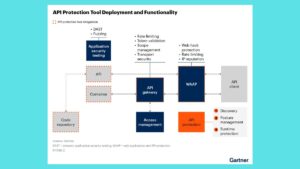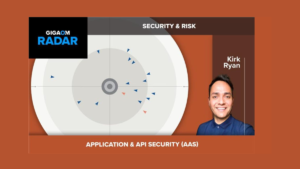Key Talent Acquisition Metrics You Should Track in 2025

In the rapidly evolving world of recruitment, tracking the right metrics is essential for optimizing talent acquisition strategies and making informed decisions. As we approach 2025, the focus on data-driven recruitment is becoming more pronounced, and understanding which metrics to track can give organizations a significant edge in attracting and retaining top talent. In this blog, we will explore the key talent acquisition metrics you should monitor to ensure a successful recruitment process and improve overall hiring outcomes.
1. Time to Fill
Definition: Time to Fill measures the number of days it takes from when a job requisition is opened to when a candidate accepts the offer.
Why It Matters: This metric helps assess the efficiency of your recruitment process. A prolonged time to fill can indicate bottlenecks in the hiring process or difficulties in finding the right candidate. By tracking this metric, you can identify areas for improvement and streamline your recruitment efforts to reduce the time it takes to fill critical positions.
How to Improve: Implement an efficient recruitment workflow, use applicant tracking systems (ATS) to automate processes, and ensure clear communication with candidates to keep them engaged throughout the hiring process.
2. Cost Per Hire
Definition: Cost Per Hire calculates the total expenses associated with hiring a new employee, including advertising, recruitment agency fees, and internal HR costs.
Why It Matters: This metric helps evaluate the financial efficiency of your recruitment strategies. High cost per hire may indicate that your methods are not as cost-effective as they could be, potentially impacting your overall budget.
How to Improve: Optimize your recruitment channels, leverage employee referrals, and negotiate better rates with recruitment agencies to reduce hiring costs without compromising on candidate quality.
3. Quality of Hire
Definition: Quality of Hire assesses the performance and success of new hires within their roles, typically measured through performance evaluations, retention rates, and overall impact on the organization.
Why It Matters: Hiring the right talent is crucial for long-term success. By tracking the quality of hire, you can determine whether your recruitment process is attracting candidates who meet the desired criteria and contribute positively to the organization.
How to Improve: Use detailed job descriptions, conduct thorough interviews, and involve key stakeholders in the hiring process to ensure candidates align with the company’s values and job requirements.
4. Source of Hire
Definition: Source of Hire identifies where your successful candidates are coming from, such as job boards, social media, employee referrals, or recruitment agencies.
Why It Matters: Understanding which sources yield the best candidates helps allocate resources more effectively and refine your recruitment strategy. This insight allows you to focus on the most productive channels and reduce spending on less effective sources.
How to Improve: Analyze the performance of various recruitment channels and adjust your strategy based on which sources consistently produce high-quality candidates.
5. Candidate Experience
Definition: Candidate Experience measures the overall satisfaction of candidates with the recruitment process, from initial application to onboarding.
Why It Matters: A positive candidate experience can enhance your employer brand and increase the likelihood of candidates accepting offers. Negative experiences, on the other hand, can deter top talent and damage your reputation.
How to Improve: Streamline your application process, maintain clear and timely communication with candidates, and gather feedback to continually improve the recruitment experience.
6. Offer Acceptance Rate
Definition: Offer Acceptance Rate tracks the percentage of job offers that are accepted by candidates compared to the total number of offers extended.
Why It Matters: A low offer acceptance rate can indicate issues with your compensation packages, job offers, or overall candidate engagement. Monitoring this metric helps ensure that your offers are competitive and appealing to top talent.
How to Improve: Regularly review and benchmark your compensation packages against industry standards, and ensure that your offers reflect the value of the role and the candidate’s expectations.
7. Diversity Hiring Metrics
Definition: Diversity Hiring Metrics measure the success of your recruitment efforts in attracting and hiring candidates from diverse backgrounds.
Why It Matters: Fostering a diverse workforce is crucial for innovation and inclusivity. Tracking diversity hiring metrics helps assess the effectiveness of your diversity recruitment strategies and ensure that you are making progress toward your diversity and inclusion goals.
How to Improve: Implement inclusive hiring practices, actively recruit from diverse talent pools, and track diversity metrics to identify areas for improvement and adjust your strategies accordingly.
8. Recruitment Funnel Metrics
Definition: Recruitment Funnel Metrics track the efficiency of each stage of the recruitment process, including application rates, interview-to-offer ratios, and offer-to-hire ratios.
Why It Matters: Analyzing the recruitment funnel helps identify where candidates may be dropping off and allows you to address any issues that may be affecting the hiring process.
How to Improve: Optimize each stage of the recruitment funnel by refining job descriptions, improving interview techniques, and ensuring timely follow-ups with candidates.
9. Employee Retention Rate
Definition: Employee Retention Rate measures the percentage of new hires who remain with the organization over a specified period, typically one year.
Why It Matters: High turnover rates among new hires can indicate problems with the recruitment process or onboarding experience. Monitoring this metric helps assess the long-term effectiveness of your hiring practices.
How to Improve: Focus on cultural fit during the recruitment process, provide comprehensive onboarding and training, and ensure ongoing support and development opportunities for new employees.
10. Recruitment ROI
Definition: Recruitment ROI evaluates the return on investment for your recruitment efforts by comparing the benefits gained from successful hires to the costs incurred.
Why It Matters: Tracking recruitment ROI helps assess the overall value of your recruitment activities and ensures that your investment in talent acquisition delivers tangible results.
How to Improve: Regularly review recruitment costs and outcomes, and make data-driven decisions to optimize your recruitment strategies and improve ROI.
Conclusion
Tracking the right talent acquisition metrics is essential for optimizing your recruitment process and making informed decisions. By monitoring these key metrics—time to fill, cost per hire, quality of hire, source of hire, candidate experience, offer acceptance rate, diversity hiring metrics, recruitment funnel metrics, employee retention rate, and recruitment ROI—you can gain valuable insights into your recruitment efforts and drive continuous improvement. As we move into 2025, leveraging these metrics will help you attract and retain top talent, enhance your hiring strategies, and achieve long-term success.






